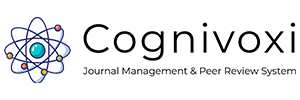Introduction
Aquaculture, the farming of aquatic organisms such as fish, shellfish, and seaweed, is one of the fastest-growing food production sectors in the world. As global demand for seafood increases, the need for efficient, sustainable, and disease-free aquaculture practices has never been greater. Veterinary science plays a pivotal role in this field, contributing to the health, welfare, and productivity of farmed aquatic species. This article explores the crucial intersection between aquaculture and veterinary science and how it drives the future of sustainable aquatic farming.
Aquaculture: A Growing Industry
Aquaculture provides a significant portion of the global seafood supply. According to the Food and Agriculture Organization (FAO), nearly half of all seafood consumed worldwide comes from aquaculture. This growing demand is driven by an increasing global population, shifting dietary habits, and the need for protein sources that are more sustainable than terrestrial livestock farming.
However, with rapid expansion come numerous challenges. These include water quality management, disease control, environmental impact, and ensuring the health of aquatic species. This is where veterinary science steps in, ensuring that aquaculture practices are not only profitable but also ethical, safe, and environmentally sustainable.
Role of Veterinary Science in Aquaculture
Veterinary science is essential for maintaining the health and welfare of aquatic species. Veterinarians in aquaculture specialize in the diagnosis, treatment, prevention, and control of diseases in farmed aquatic organisms. They employ various tools, such as vaccines, biosecurity measures, and diagnostic techniques, to protect against diseases that can significantly impact production levels and quality.
1. Disease Management and Prevention
One of the most significant concerns in aquaculture is disease outbreaks, which can lead to massive economic losses. Aquatic species, like their terrestrial counterparts, are susceptible to a wide range of infectious diseases, including bacterial, viral, and parasitic infections.
Veterinary science plays a vital role in developing and implementing preventive strategies to control these diseases. Vaccination, genetic selection for disease-resistant traits, and improving water quality are all essential components of a comprehensive disease management program. Moreover, veterinarians help design biosecurity protocols that reduce the risk of disease transmission between farms and wild populations.
2. Aquatic Animal Welfare
The welfare of farmed aquatic animals is another crucial concern in aquaculture. The physical and psychological well-being of aquatic species is impacted by factors such as water temperature, stocking density, and environmental enrichment. Veterinarians are key in monitoring these factors and ensuring optimal living conditions for aquatic animals.
Veterinary science also promotes ethical treatment, encouraging practices that minimize stress and injury to farmed species. By ensuring that aquatic organisms are treated humanely, veterinarians help aquaculture farms meet growing consumer demand for ethically produced seafood.
3. Environmental Sustainability
The relationship between aquaculture and the environment is complex. While aquaculture offers a more sustainable alternative to wild-caught seafood, it can still contribute to environmental degradation if not managed properly. Disease outbreaks, excessive use of antibiotics, and nutrient runoff into surrounding ecosystems can negatively impact water quality and biodiversity.
Veterinary science helps mitigate these environmental risks by promoting practices that maintain the health of both the aquatic organisms and their environment. Veterinarians can advise on sustainable feed practices, waste management, and eco-friendly production methods that minimize ecological footprints. They also play a role in developing protocols for the safe use of medications and chemicals to prevent environmental contamination.
4. Food Safety and Quality Assurance
Food safety is another critical area where veterinary science intersects with aquaculture. As with all animal products, seafood must meet strict health and safety standards before it reaches consumers. Veterinarians ensure that farmed aquatic organisms are free from contaminants and harmful substances, such as antibiotics or heavy metals, which could pose a risk to human health.
Veterinary oversight is also crucial in monitoring the quality of the harvested product. Regular health checks, post-mortem examinations, and lab tests for pathogens are standard practices that guarantee only safe and high-quality seafood is brought to market.
5. Technological Advancements and Research
Veterinary science in aquaculture is not static; it evolves with new technologies and research. Innovations in genetic engineering, diagnostics, and treatment methods are constantly improving the sustainability and profitability of aquaculture farms. For example, advancements in gene editing may lead to the development of disease-resistant species, reducing the need for antibiotics and other treatments.
Moreover, veterinarians and researchers collaborate to explore alternative feeds, such as plant-based or insect-based protein, to reduce the environmental impact of traditional fishmeal-based diets. They also contribute to the development of vaccines and other preventive measures that can enhance the health of farmed species while minimizing the risk of disease transmission.
Conclusion
The relationship between aquaculture and veterinary science is integral to the future of sustainable and ethical seafood production. As the global demand for seafood continues to rise, ensuring the health, welfare, and sustainability of aquaculture operations will be paramount. Veterinary professionals will remain at the forefront of this effort, using their expertise to promote healthier aquatic species, mitigate environmental risks, and ensure that aquaculture remains a viable solution to meet the world’s food needs. By leveraging science and technology, veterinary medicine is shaping the future of aquaculture to provide safe, sustainable, and high-quality seafood for generations to come.


Leave A Comment